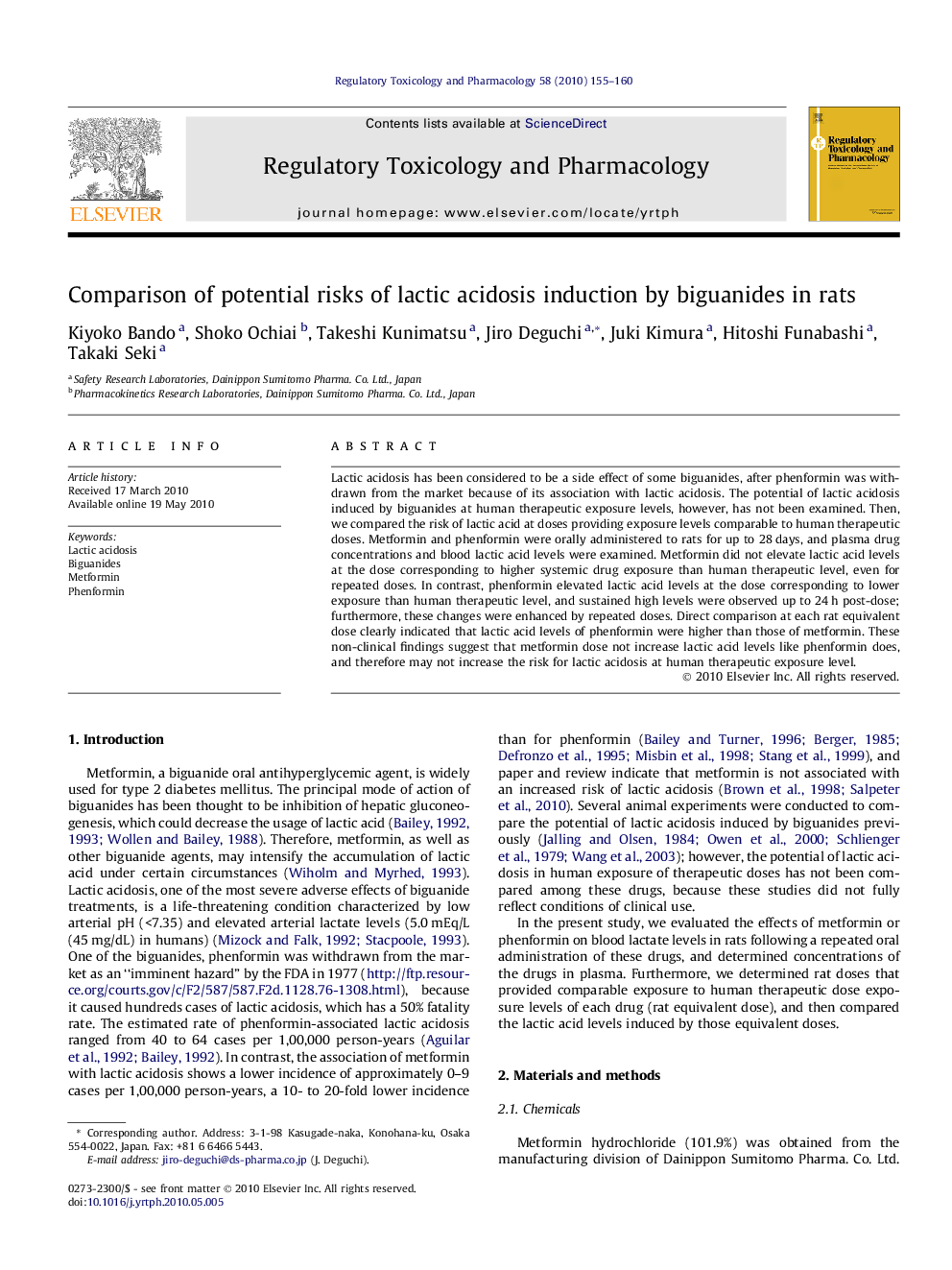| Article ID | Journal | Published Year | Pages | File Type |
|---|---|---|---|---|
| 2592509 | Regulatory Toxicology and Pharmacology | 2010 | 6 Pages |
Lactic acidosis has been considered to be a side effect of some biguanides, after phenformin was withdrawn from the market because of its association with lactic acidosis. The potential of lactic acidosis induced by biguanides at human therapeutic exposure levels, however, has not been examined. Then, we compared the risk of lactic acid at doses providing exposure levels comparable to human therapeutic doses. Metformin and phenformin were orally administered to rats for up to 28 days, and plasma drug concentrations and blood lactic acid levels were examined. Metformin did not elevate lactic acid levels at the dose corresponding to higher systemic drug exposure than human therapeutic level, even for repeated doses. In contrast, phenformin elevated lactic acid levels at the dose corresponding to lower exposure than human therapeutic level, and sustained high levels were observed up to 24 h post-dose; furthermore, these changes were enhanced by repeated doses. Direct comparison at each rat equivalent dose clearly indicated that lactic acid levels of phenformin were higher than those of metformin. These non-clinical findings suggest that metformin dose not increase lactic acid levels like phenformin does, and therefore may not increase the risk for lactic acidosis at human therapeutic exposure level.
